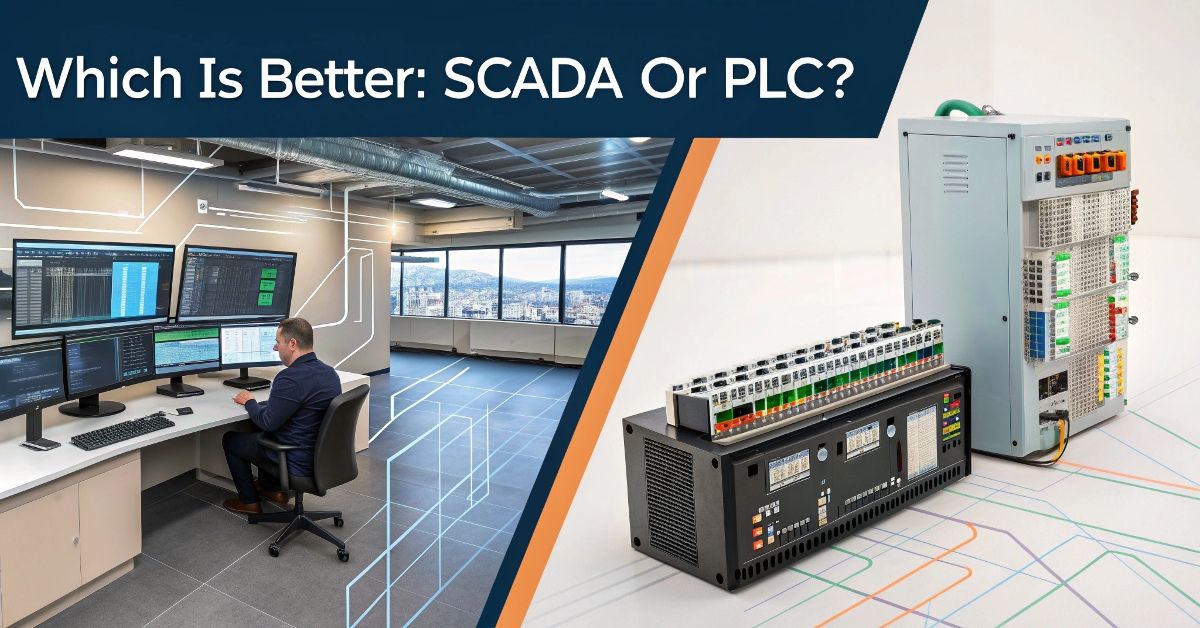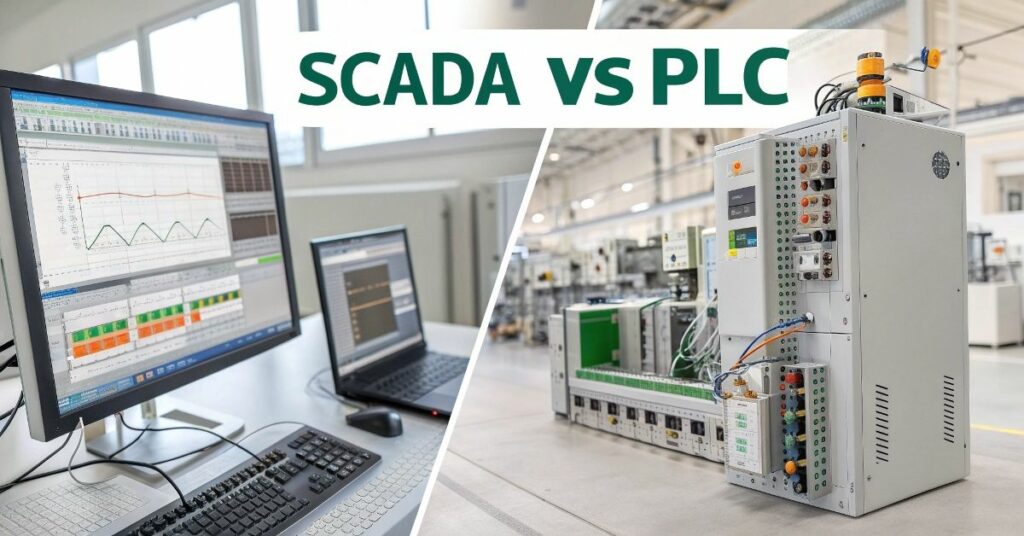
In industrial automation systems, both SCADA and PLC are used. A SCADA system operates as a supervision control and data acquisition system. Centralized monitoring and management functions can be controlled using this system for distributed systems. PLC stands for Programmable Logic Controller. Real-time machine control and process operations occur through ground facilities.
The debating point between SCADA and PLC remains inconsistent as people attempt to determine their respective superiority. The answer is not so simple. The implementation of SCADA or PLC depends entirely on the specific requirements of the operational system. People are better able to choose the correct option by understanding the difference between SCADA and PLC. This text examines their operational principles as well as their installation locations.
Large system management across various locations can be accomplished efficiently by using SCADA technology. The fast direct control system which PLC provides functions optimally for machine operation. These systems demonstrate specific advantages that make them more efficient when working synergistically during particular operations.
Understanding the Basics: What Is a PLC?
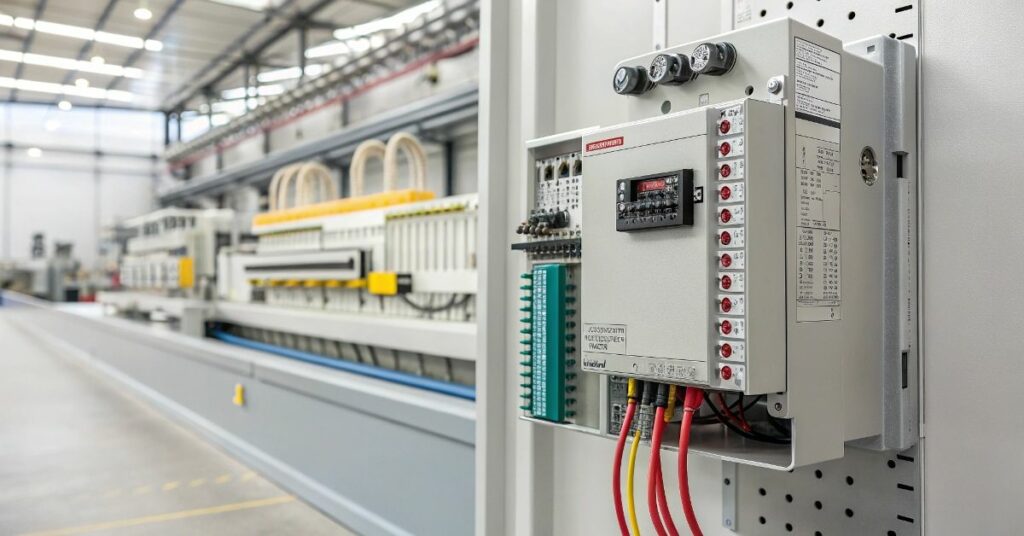
A Programmable Logic Controller is a small computer. The technology enables machine and production process management at industrial facilities. The sensors that PLCs utilize for input processing enable the controllers to oversee machinery functionality. The device executes operational sequences by powering motors and deactivating them. PLCs come with a durable construction and high speed operation and exceptional performance in challenging settings.
These devices operate in food production facilities along with oil refineries and automotive manufacturing sectors. Engineers can set different operations for a PLC through programming. PLCs gain their adaptability and usefulness from their programming capabilities. The initial stage of automation education requires grasping how a PLC operates.
What Is SCADA and How Does It Work?
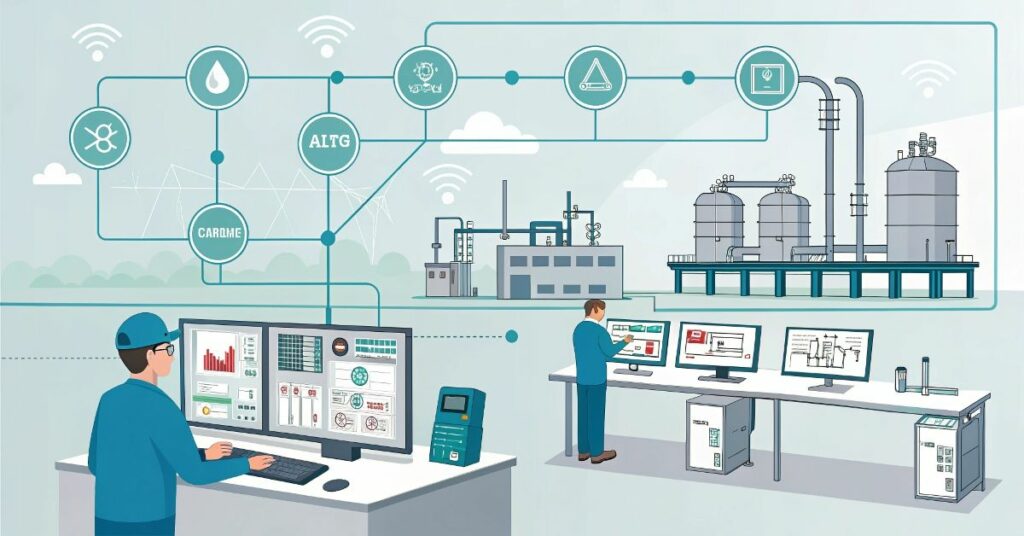
Data acquisition and control operate under the name of SCADA. A supervisory control and data acquisition system operates as an industrial process monitoring and control system. Through SCADA systems machines transmit their data points which appear as screen displays. Real-time monitoring is possible through operators’ view of system operations. The central computer allows operators to control machines from its location.
SCADA works with sensors, PLCs, and other devices. The system centralizes data acquisition before permanent storage in its central database followed by display on the user interface. The system detects problems which trigger SCADA to issue an alert. The system provides safe and continuous operation by monitoring functions. This system finds applications in water plants, power stations together with factories.
Key Differences between PLC and SCADA
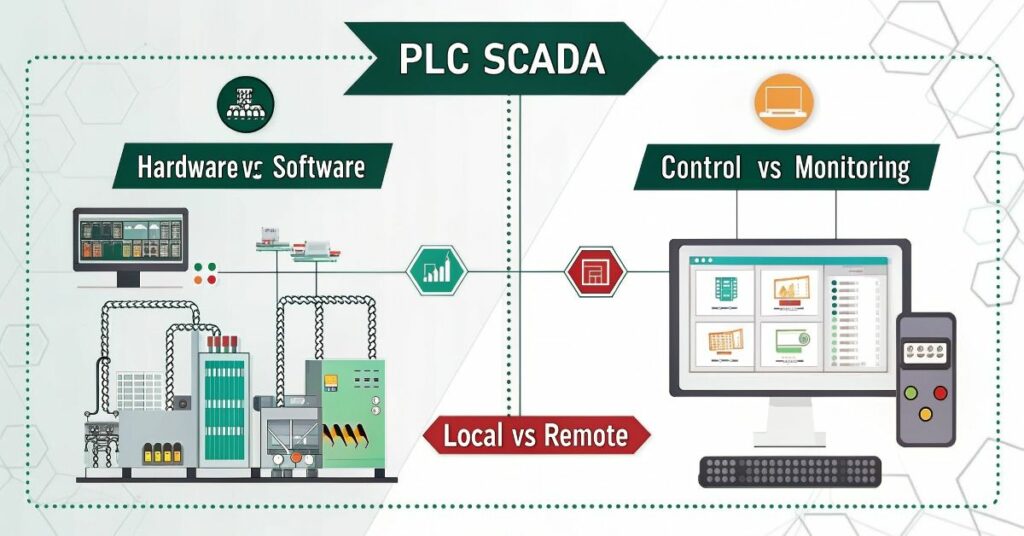
The partnership exists between PLCs and SCADA but does not equate to their complete equivalence. A PLC operates to manage devices and operations directly. Operations and management of these processes take place through a central location using SCADA. A system depends on PLC to execute tasks while SCADA functions as its monitoring and decision-making center.
Here are some key differences:
- PLC controls machines; SCADA monitors and manages.
- PLC works at the machine level; SCADA works at the system level.
- PLC reacts fast; SCADA collects and displays data.
- PLC is used on-site; SCADA can be used remotely.
- PLC needs programming; SCADA needs setup and data links.
How PLC and SCADA Work Together?
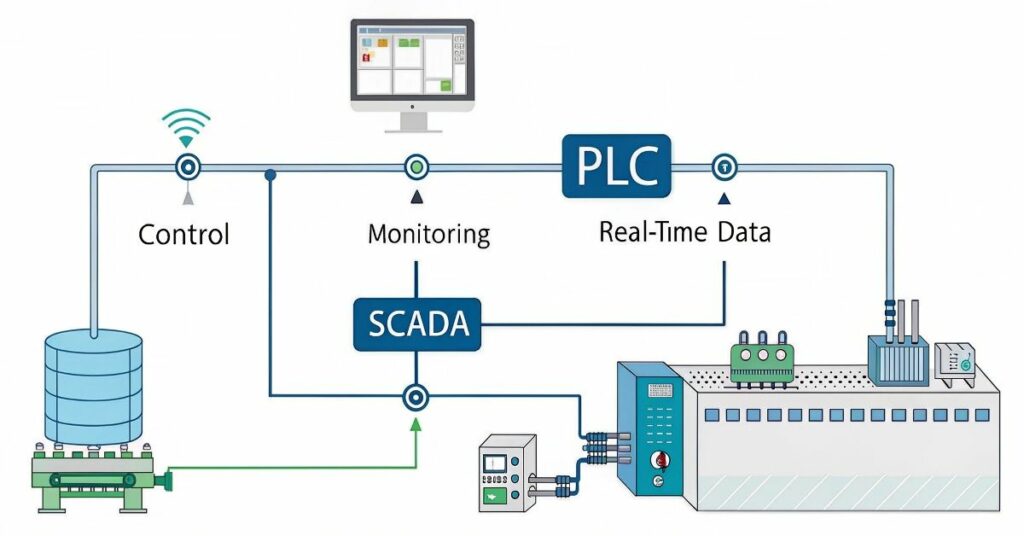
PLC and SCADA join forces within automation systems to operate together. The PLC manages all industrial machines as well as manufacturing equipment. PLCs obtain information from sensors before directing commands to operational devices. The PLC transmits information to SCADA while it performs the data collection process.
The information displayed by SCADA appears on visual screens accessible to operators. The warning system of SCADA activates when something goes wrong with the system. The PLC receives directives through SCADA operations. The collaborative effort between these systems enables smooth and safe operation of the system.
Use Cases: Where PLCs Shine
The quick reliable control features of PLC systems make them highly useful. The majority of factories deploy PLCs to manage their operational equipment. Conveyor belts and robotic arms receive their commands from PLCs together with packing machines. The system processes changes fast while maintaining operational stability.
The application of PLCs remains effective when operating in extreme environmental conditions. These controllers have the ability to function under hot temperatures while withstanding dust and vibration. Such controllers operate within the boundaries of food plant facilities and vehicle manufacturing plants as well as power generation facilities. These devices provide strong performance with quick reaction times which makes them appropriate choices for numerous tasks.
Use Cases: When SCADA Is the Better Choice
The monitoring of extensive systems works optimally using SCADA systems. The system enables multiple location management through operation oversight. Water treatment facilities and power networks and oil delivery systems utilize this technology. Through SCADA operators maintain visual access to actual system data and operational controls in a single interface.
The system maintains both records and sends notification alerts. The system enables quick identification of problems together with their easy resolution. This table represents typical applications of SCADA technology.
| Industry | SCADA Use |
| Water Management | Monitor tanks and pump stations |
| Energy | Control power plants and grids |
| Oil & Gas | Track pipeline flow and pressure |
| Manufacturing | View and control full plant system |
| Transportation | Manage traffic and rail systems |
Final Verdict: Which One Is Better for Your Needs?
Your requirements determine which system between PLC and SCADA will be the most suitable for your application. A PLC provides better speed in managing machine operations when fast process control is necessary. Real-time control of individual equipment makes this system the best option for its purpose. PLCs function optimally when controlling operations which demand rapid responses followed by direct execution of commands.
The decision between PLC and SCADA depends on whether you require remote system oversight at a central location. SCADA enables remote tracking of data while helping identify problems which result in distant operation control. A partnership exists between PLCs and SCADA systems where SCADA controls and monitors operations while PLCs manage the specific process execution. The selection of the system depends on the operational size together with specific requirements.
FAQ’s
What is the main difference between PLC and SCADA?
A central location uses SCADA to monitor and control processes that PLCs operate through machines.
Can PLC and SCADA work together?
Yes, PLCs and SCADA often work together; PLCs control the equipment, and SCADA collects and displays the data for monitoring and management.
Where should I select SCADA systems instead of PLC units?
Select SCADA when monitoring extensive systems while maintaining data collection and remote operation control of multiple sites.
Conclusion
The automation industry requires PLC and SCADA as fundamental components that operate through distinct operational functions. The control of single machines and their processes best suits PLCs because they deliver swift and straightforward responses. The monitoring capabilities of SCADA surpass those of PLC because it allows operators to oversee and control bigger systems through a centralized station.
The select choice depends on specific requirements. A PLC should be selected when real-time control is required. SCADA operates better for managing extensive operations while monitoring various systems. Often, using both systems together creates an efficient and well-managed automation process.

